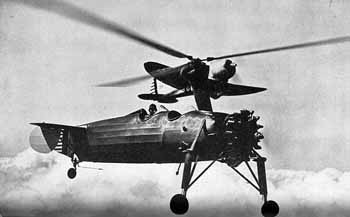 |
A Kellett YG-1 gyroplane in formation with a Seversky P-35. Both the YG-1 and
Pitcairn's YG-2 were direct-control autogyros purchased and evaluated by the U. S. Army.
Experience with these rotorcraft lead to the development of American helicopters for
military use. |
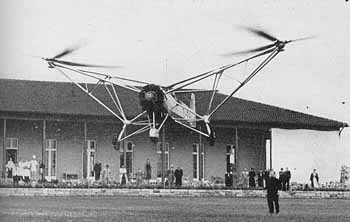 |
Germany's Focke-Wulf 61 was one of the first successful helicopters. It used two
rotors which rotated in opposite directions to offset rotor torque. For more information,
try German Helicopters 1928-1945 by Heinz J. Nowarra, Schiffer Military History,
1990. |
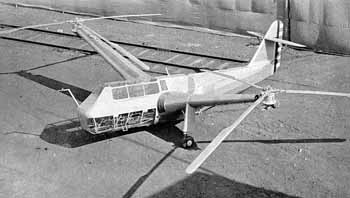 |
In 1940, the Platt-LePage Aircraft Co. won an Army contract for a helicopter. Drawing
on German experience, the XR-1 used twin rotors powered by a Pratt & Whitney R-985
engine of 450 h.p. Flight testing began in May of 1941. A number of changes were made
before significant flights were regularly performed. |
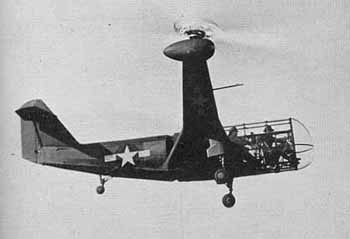 |
With a modified nose section, the XR-1A made its first flights in late 1943. One other
airframe was produced for testing of improvements of the controls but did not fly. The
XR-1 is in storage at the NASM, while the XR-1A was sold to Frank Piasecki and
accidentally scrapped. [Thanks to Jay Hendrickson for this correction and additional
information.] |
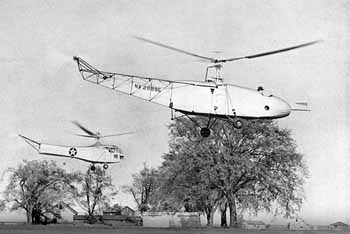 |
Igor Sikorsky's VS-300 (right front) demonstrated that a single rotor helicopter with
a small anti-torque rotor on the tail was practical, and the Army ordered a version called
the XR-4 (rear left). |
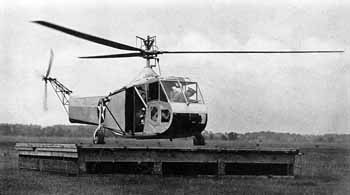 |
The XR-4 first flew on 14 January, 1942 and went on to pass Army test to demonstrate
the craft's controllability. Here, it has landed on a 20' x 20' platform. Service test
models were known as YR-4s and the final production version was the R-4B, one of which is a part of the CAF's Ghost Squadron. |
|
|